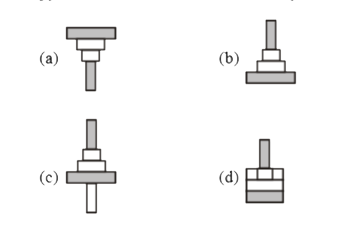On the basis of number , draw a pyramid of tree ecosystem .
Step-by-Step Solution for Drawing a Pyramid of Tree Ecosystem Based on Number
1. Identify the Levels of the Ecosystem:
- Start by identifying the different trophic levels in a tree ecosystem. The primary producers (trees) form the base, followed by primary consumers (insects), secondary consumers (birds), and tertiary consumers (predators).
2. Draw the Base Level (Producers):
- At the bottom of the pyramid, draw a large rectangle or triangle to represent the number of trees. This level has the highest number of organisms, as trees are the primary producers in the ecosystem.
3. Draw the Next Level (Primary Consumers):
- Above the trees, draw a smaller rectangle or triangle to represent the primary consumers, which are the insects that feed on the trees. This level will be smaller than the producers' level, indicating fewer insects than trees.
4. Draw the Third Level (Secondary Consumers):
- Above the insects, draw an even smaller rectangle or triangle to represent the secondary consumers, which are the birds that feed on the insects. This level will be smaller than the primary consumers' level, indicating fewer birds than insects.
5. Draw the Top Level (Tertiary Consumers):
- At the top of the pyramid, draw the smallest rectangle or triangle to represent the tertiary consumers, such as snakes, vultures, or larger birds that prey on the birds. This level will be the smallest, indicating the fewest number of top predators.
6. Label Each Level:
- Clearly label each level of the pyramid with the respective trophic level: "Producers (Trees)", "Primary Consumers (Insects)", "Secondary Consumers (Birds)", and "Tertiary Consumers (Predators)".
7. Consider Inverted Pyramids:
- Note that in some cases, you might encounter inverted pyramids, where the number of top predators is greater than the number of primary consumers. This can happen in certain ecosystems and should be acknowledged in your drawing.
- Start by identifying the different trophic levels in a tree ecosystem. The primary producers (trees) form the base, followed by primary consumers (insects), secondary consumers (birds), and tertiary consumers (predators).
- At the bottom of the pyramid, draw a large rectangle or triangle to represent the number of trees. This level has the highest number of organisms, as trees are the primary producers in the ecosystem.
- Above the trees, draw a smaller rectangle or triangle to represent the primary consumers, which are the insects that feed on the trees. This level will be smaller than the producers' level, indicating fewer insects than trees.
- Above the insects, draw an even smaller rectangle or triangle to represent the secondary consumers, which are the birds that feed on the insects. This level will be smaller than the primary consumers' level, indicating fewer birds than insects.
- At the top of the pyramid, draw the smallest rectangle or triangle to represent the tertiary consumers, such as snakes, vultures, or larger birds that prey on the birds. This level will be the smallest, indicating the fewest number of top predators.
- Clearly label each level of the pyramid with the respective trophic level: "Producers (Trees)", "Primary Consumers (Insects)", "Secondary Consumers (Birds)", and "Tertiary Consumers (Predators)".
- Note that in some cases, you might encounter inverted pyramids, where the number of top predators is greater than the number of primary consumers. This can happen in certain ecosystems and should be acknowledged in your drawing.
Topper's Solved these Questions
- ECOSYSTEM BOOK - MODERN PUBLICATIONCHAPTER - ECOSYSTEM EXERCISE - REVISION EXERCISES (II. VERY SHORT ANSWER QUESTIONS) (B. QUESTIONS FROM CBSE EXAMINATIONS)
10 Videos
- ECOSYSTEM BOOK - MODERN PUBLICATIONCHAPTER - ECOSYSTEM EXERCISE - REVISION EXERCISES (III. SHORT ANSWER TYPE - I QUESTIONS) (A. QUESTIONS FROM STATE BOARD EXAMINATIONS)
41 Videos
- ECOSYSTEM BOOK - MODERN PUBLICATIONCHAPTER - ECOSYSTEM EXERCISE - REVISION EXERCISES (I. MULTIPLE CHOICE QUESTIONS (MCQs)
30 Videos
- BIOTECHNOLOGY AND ITS APPLICATIONSBOOK - MODERN PUBLICATIONCHAPTER - BIOTECHNOLOGY AND ITS APPLICATIONSEXERCISE - CHAPTER PRACTICE TEST (SECTION - E)
2 Videos
- EVOLUTIONBOOK - MODERN PUBLICATIONCHAPTER - EVOLUTIONEXERCISE - CHAPTER PRACTICE TEST (SECTION-D)(CASE-BASED SHORT ANWER )(THREE MARK EACH)
2 Videos
Similar Questions
Knowledge Check
Pyramid of energy in a ecosystem is :
AAlways upnightBAlways erectCConstantDDecliningPyramid of energy in a ecosystem is
AAlways invertedBAlways uprightCSpindle shapeDBoth upright and inverted depending upon ecosystemWhich of the following representations shown the pyramid of number in a forest ecosystem ?
 A
A B
B C
C D
D
Which of the following representations shows the pyramid of numbers in a forest ecosystem :

View SolutionWhich of the following representations shows the pyramid of number in a forest ecosystem ?

View SolutionA: Pyramid of biomass is always upright for tree ecosystem.
R: Total biomass of a tree in a specific area is more than that of herbivores.
View SolutionThe pyramid of energy is always upright for any ecosystem. This situation indicates the fact that:
View SolutionThe pyramid of energy is always upright for any ecosystem. This situation indicates the fact that:
View Solution


